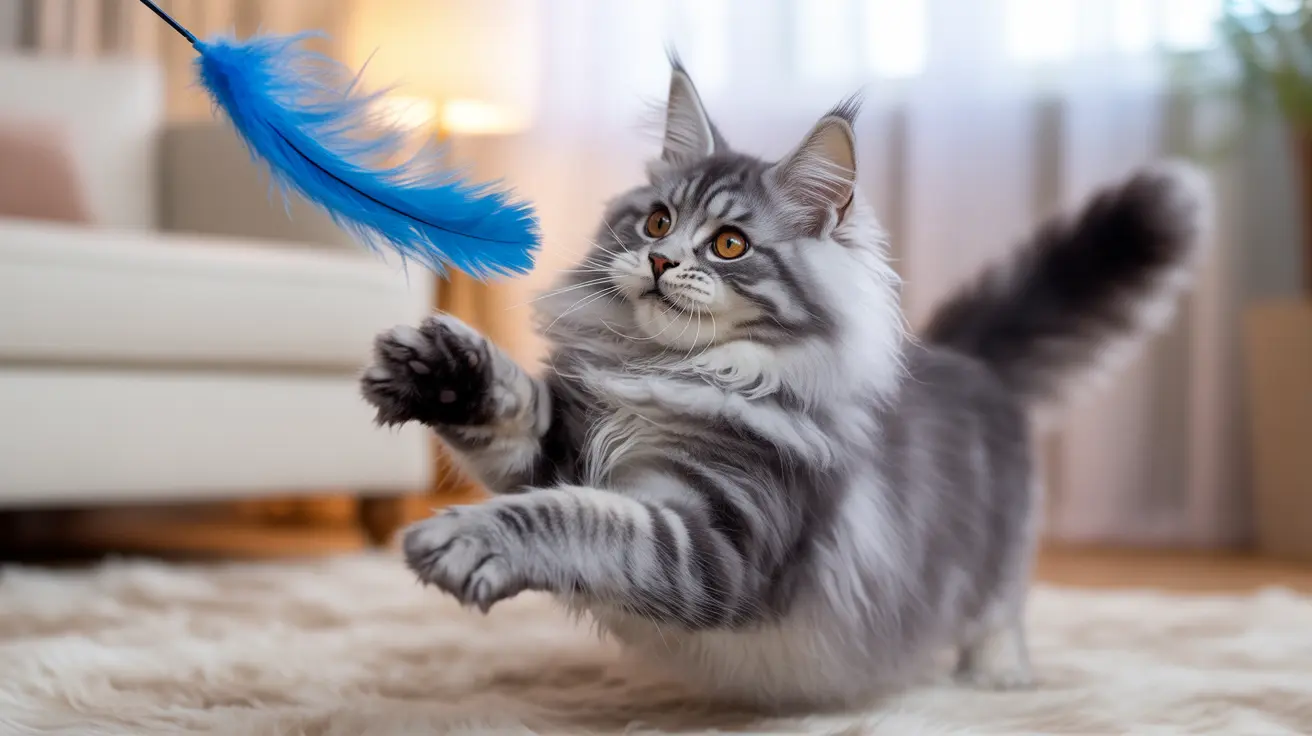Understanding Feline Hyperesthesia Syndrome in Cats
Feline hyperesthesia syndrome (FHS), sometimes called rolling skin syndrome or twitchy cat disease, is a puzzling and often distressing condition seen in cats. If you've ever noticed your cat suddenly twitching its back, chasing its tail, or acting as if something invisible is bothering it, you might have witnessed an episode of FHS.
What Does FHS Look Like?
The hallmark of this condition is involuntary skin twitching, especially along the lower back. Episodes can be brief—just a few seconds—or stretch into several minutes. During these times, cats may display:
- Rippling or twitching skin along the spine
- Dilated pupils
- Sudden bursts of jumping or running
- Excessive vocalization (meowing, yowling)
- Drooling
- Chasing or attacking their own tail
- Biting or licking the lower back and tail area
- Sensitivity or pain when touched, especially on the back
Some cats seem genuinely distressed during these episodes—they might try to hide or even become aggressive if you try to pet them.
Why Does FHS Happen?
The exact cause of FHS remains unclear. It's likely that multiple factors interact. These include:
- Neurological issues: seizures, neuropathic pain, problems with spinal discs
- Dermatological problems: allergies, flea hypersensitivity, skin infections
- Psychological factors: compulsive behaviors, anxiety, displacement activities
Certain breeds—Abyssinian, Burmese, Persian, and Siamese—seem more prone to developing FHS. Younger cats are also affected more often.
Diagnosing Feline Hyperesthesia Syndrome
No single test confirms FHS. Instead, veterinarians diagnose it by ruling out other causes. This process might include:
- A full dermatological workup to check for fleas, allergies, or infections
- Blood tests to rule out systemic illnesses like hyperthyroidism
- A neurological exam for signs of spinal or brain disease
- MRI scans or cerebrospinal fluid analysis if serious neurological problems are suspected
Your vet will also ask about your cat's environment and behavior at home. Sometimes a behavioral evaluation helps clarify whether stress or anxiety plays a role.
Treatment Strategies for FHS
Treating feline hyperesthesia usually means combining several approaches tailored to your individual cat. Here’s what that can involve:
- Treating underlying medical conditions such as allergies or parasites if present
- Reducing stress through environmental enrichment—think safe hiding spots and regular playtime routines
If stress seems to trigger episodes, behavioral modification therapy can help desensitize your cat and reduce anxiety-driven behaviors. A veterinary behaviorist may guide this process.
Medications Commonly Used:
- Gabapentin (for nerve pain and anxiety)
- Anti-seizure drugs like phenobarbital
- Psychoactive medications such as SSRIs (fluoxetine), tricyclic antidepressants, benzodiazepines
Nutritional supplements—like omega-3 fatty acids—may also support skin health.
Lifelong Management and Prognosis
This condition tends to recur throughout a cat’s life. There’s no cure yet; instead, the goal is to manage symptoms long-term. Many cats respond well to treatment and can go months without an episode. Most enjoy normal lives with proper care.
Environmental Modifications That Help:
- Create quiet spaces where your cat feels safe
- Stick to predictable feeding and play schedules
- Avoid social stressors (like introducing new pets too quickly)
Pheromone diffusers may calm some cats. If self-mutilation occurs (biting/licking until injury), protective measures like recovery cones or t-shirts—and effective pain management—are essential.
The Role of Owners in Managing FHS
Cats with FHS often experience discomfort during episodes. Owners should avoid petting their cat when an episode starts—it can make things worse. Instead, focus on preventing injuries and keeping the environment calm.
- If you see signs of self-trauma (bleeding or sores), consult your vet right away.
The Bottom Line on FHS in Cats
If you suspect your cat has feline hyperesthesia syndrome, early veterinary consultation makes all the difference. With patience and a tailored treatment plan—including medical care and environmental changes—most cats improve significantly and enjoy active lives despite this mysterious condition.





